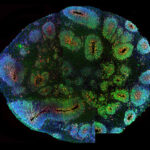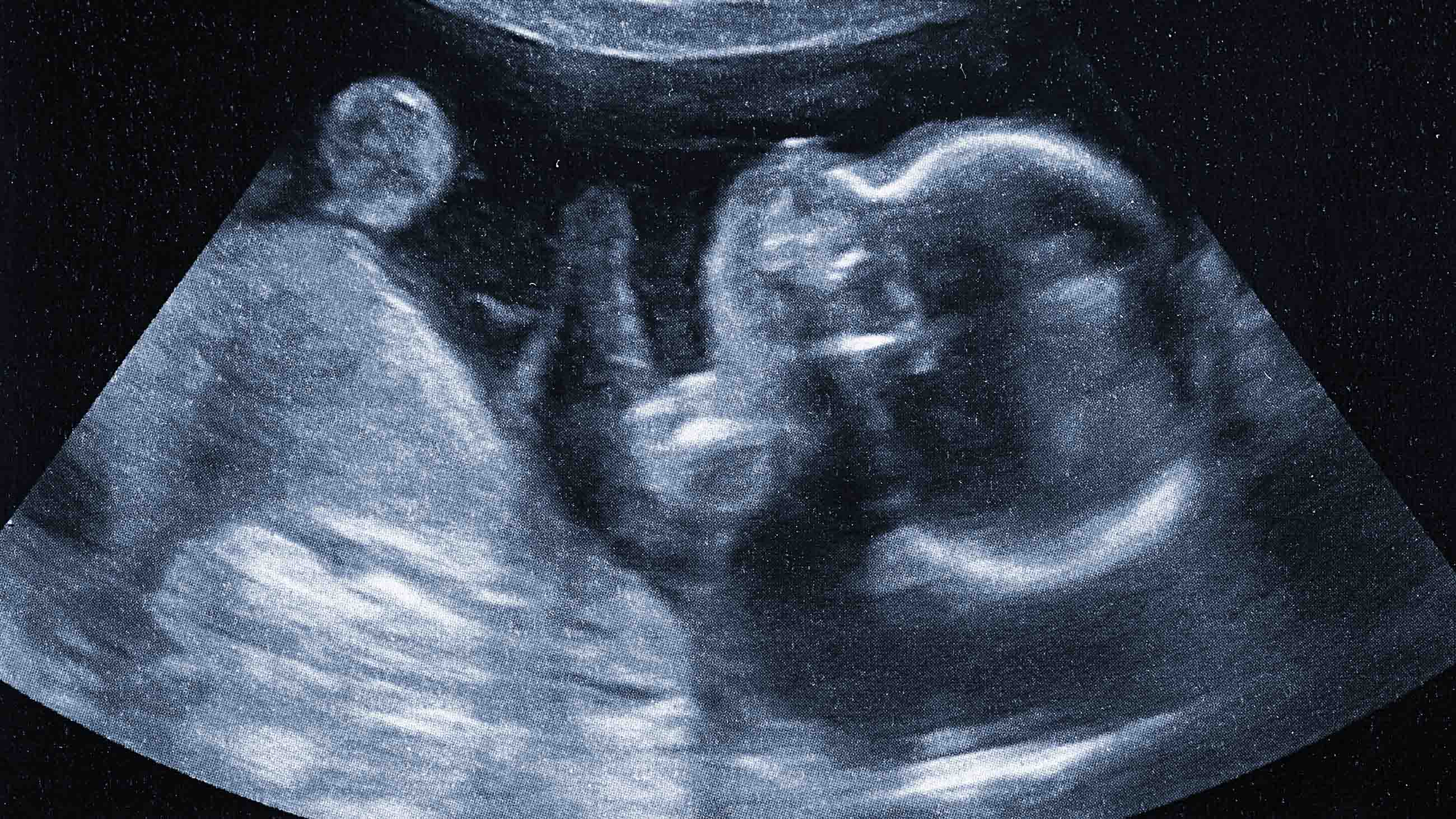Can Pregnancy Help Scientists Better Understand Cancer?
Svetomir Markovic knew something was different. Sometime around 2010, a fellow scientist at the Mayo Clinic had agreed to donate her healthy blood for use in the research laboratory where Markovic studies the interface between cancer and the immune system. In previous testing of the woman’s blood, her immune cells functioned normally. But then something changed, and nobody knew why.
“We thought our assays weren’t working,” recalls Markovic, a hematologist and oncologist whose research focuses on developing immunotherapies for melanoma and non-Hodgkin’s lymphoma. Or perhaps the reagents had expired, or the laboratory’s machines needed fine-tuning. For nearly a month, the team puzzled over the woman’s changing lab values. “At this point, she was quite visibly pregnant,” Markovic laughs, noting how obvious the answer seems in hindsight. “It finally dawned on me — what if it’s the pregnancy?”
Sensing that the question’s answer could have implications for his cancer research, Markovic decided to study cells of the placenta, the disk-shaped organ that develops during pregnancy and connects the mother’s blood supply with that of her fetus. In the eight years since then, Markovic and other researchers have discovered some remarkable similarities in how cancer cells and placental cells regulate the immune system. This knowledge may one day lead to better cancer detection and treatment. For now, though, researchers are focused on deciphering the underlying process — and answering a sobering question: Are the cells of death exploiting the mechanisms intended to promote the cells of life?
Typically, when the body senses a foreign substance such as a virus or a bacterium, it sends immune cells to attack the invader while also bolstering the immune system as a whole. Cancer cells are vulnerable to this kind of attack because they produce mutated proteins that the immune system may identify as foreign. But cancer cells can escape immune surveillance using a variety of techniques to disguise themselves.
Until recently, Markovic says, most scientists believed that outside of localized changes near the cancer cells, the immune system of cancer patients essentially functioned normally. But as a young researcher in the early 2000s, he wasn’t convinced this told the whole story. He tested that idea by comparing immune-cell activity in the blood of healthy people and cancer patients.
What he found was that cancer doesn’t merely disrupt the immune response around the tumor — it affects the entire system. One of his team’s early findings, published in 2011, was that tumors have high levels of a particular protein known to suppress the immune system and induce a state of system-wide chronic inflammation. He says in his experiments, the immune system “was totally unable to fight.” What’s more, it became increasingly protective of cancer cells. He wondered: “How could a tiny cancer cell cause such dysfunction across the whole body’s immune system?”
Markovic theorized that tumors train the immune system to tolerate their foreign protein, though he wasn’t sure how until the pregnant researcher’s blood got him thinking. Researchers already knew that a woman’s immune system changes during pregnancy. Perhaps these changes could help explain what happens during cancer.
Like tumor cells, fetal cells are foreign to the body. Half of their genes come from another source (and in the case of donor eggs or embryos, all of the genes are foreign). If an organ this incompatible were transplanted into the body, it would likely be rejected. But during pregnancy, the fetus is protected from the mother’s immune system by the placenta, which has specialized cells — called trophoblasts — that can burrow into the mother’s body without exciting an attack by the immune system.
During pregnancy, a mother’s immune system isn’t switched off, but it is strategically suppressed, especially during the first trimester to allow for successful implantation. A subset of immune cells that manage immune system suppression, known as regulatory T cells, begins learning to tolerate the fetal cells as non-foreign. Stanford researchers recently discovered that the changes in an expectant mother’s immune system follow a specific timeline in full-term pregnancies, which they dubbed an “immunological clock of pregnancy.” Interestingly, as the clock progresses, regulatory T cells become increasingly able to tolerate fetal cells.
Markovic and his team at the Mayo Clinic wondered if tumors might be employing some of the same tactics as the placenta to outsmart the immune system: “Tumor cells may mimic trophoblastic cells of the placenta in that they downregulate danger signals while increasing expression of immunosuppressive mediators,” Markovic and his co-authors wrote in a 2015 review paper published in the journal Frontiers in Immunology. So he and his team compared the top 20 to 30 known immune system regulators in pregnancy with cancer’s immune system regulators.
“I nearly fell off my chair when I saw the data,” Markovic says. “There was such a profound similarity in regulation of the immune system by the placenta and by cancer. They were the exact same players doing the exact same thing.”
In particular, two molecules known to play a role in cancer’s suppression of the immune system are PD-L1 and galectin-9. They inhibit the abilities of tumor-infiltrating white blood cells and increase the abilities of immunosuppressive regulatory T cells. PD-L1 sits on the surface of cells and acts as a kind of stop sign, telling T cells not to attack. To gauge the dampening of the whole immune system, Markovic and his team tested levels of galectin-9 and PD-L1 in the blood plasma of pregnant women and of cancer patients. To determine local immune control, where the invasive tissue interfaces with normal cells, post-birth placentas and stage-four melanoma tumors were examined.
When compared with the blood of healthy, non-pregnant control subjects, galectin-9 levels in both pregnant women and cancer patients were significantly elevated. Similarly, PD-L1 levels were raised in both groups. In the local areas — the trophoblastic cells of the placenta and the edges of the tumor — both molecules were found at high concentrations. In a 2016 study published in the journal Placenta, Markovic’s team concludes that there are indeed “striking similarities between trophoblasts and tumors.”
Of course the immune cells in the pregnant scientist’s blood had stopped behaving “normally”: the immune system in pregnancy is anything but normal.
This realization “pushed one entire laboratory project in the direction of understanding the immunology of pregnancy as a model for immunity of cancer,” Markovic says. One of his students went on to pursue a Ph.D. on this topic.
Markovic is not alone. Researchers at other institutions are also uncovering parallels between pregnancy and cancer. In both conditions, the immune system does not merely ignore the invasive cells, it actively encourages their growth. Scientists at the Rosalind Franklin University of Medicine and Science in Chicago found a “remarkable similarity” between the cells that support the growth and development in placentas and in tumors. They do this “by activating the portion of the immune response which initiates and helps control tissue repair,” the researchers note in the June 2017 issue of Gynecologic Oncology.
Scientists at the University of Otago in New Zealand have also noted that this altered immune function occurs when a certain set of genes is turned on or off. “Essentially, we are using the human placenta as a model to identify genes that play a key role in invasion in both the placenta and cancer,” wrote Chi Sutherland, a Ph.D. candidate leading the project, in an email.
“There is an increasing body of evidence in support of functional and molecular similarities between the placenta and cancer; however, no one has looked at the particular class of genes that we are interested in,” she added.
Sutherland is looking at a subset of genes known as retrotransposon-derived genes (RDGs). In the placenta, RDGs have been found working in pathways associated with many of the tools of invasion: immune suppression, blood vessel growth, cell proliferation, and inflammation.
Among mammals, the human placenta mounts one of the most extensive invasions of the uterine wall. This high level of interaction makes nutrient and waste transfer between mother and fetus more efficient, but it also risks provoking a stronger maternal immune response.
During conception and fetal development, the invasion process is amazingly complex and intricately regulated, explains Sutherland. In cancer, that regulation is lost. “We think that these genes, which are normally only expressed in the placenta to facilitate invasion, are becoming reactivated in cancer cells and supporting invasion in this context too,” she says. Her project aims to identify more placental RDGs and determine whether they are also activated in cancer cells, and if so, whether they promote cancer cell invasion.
“We think some of these genes could be ‘hijacked’ by cancer cells and may contribute to the shared invasive characteristics of the placenta and cancer,” Sutherland says. If this is the case, then cancer cells do, in fact, exploit the very mechanisms that make it possible for a fetus to survive inside a woman’s womb.
Currently, several medications that inhibit PD-L1 are used in cancer immunotherapy. The problem is that when T cells are allowed to attack, they can destroy both cancer cells and healthy cells, leading to a wide array of side effects. Sutherland says the genes she studies are already silenced in healthy adult tissue, so theoretically researchers should be able to design therapies that re-silence them in cancer cells without side effects.
For his part, Markovic plans to research diseases of the placenta, to see whether there is an on/off switch for its control of the immune system. He is hopeful that if better understood, these biological mechanisms could illuminate new ways of treating cancer. As of today, his team has one “candidate molecule” that they hope to bring into clinical studies within the next 18 months, and a second one that is showing great promise.
And of course, it is not lost on Markovic — and certainly not on his wife, he says — that this promising line of inquiry might never have been explored, had that female colleague not been working as a medical research scientist at the Mayo clinic eight years back; had she not volunteered to donate her blood for Markovic’s research; and had she not continued to work — and donate — after becoming pregnant.
When Markovic told his wife, a cardiologist, about his discovery of the striking similarities between how tumors and placentas control the immune system, he describes her as being wholly unsurprised.
“See?” Markovic recalls her replying. “Women had the answer all along.”
Olivia Campbell, a science journalist and essayist, is a regular contributor at New York Magazine. Her work has also appeared in The Washington Post, Scientific American, Quartz, VICE, Pacific Standard, and STAT News.











Comments are automatically closed one year after article publication. Archived comments are below.
PIES Cancer Hypothesis
E-Cancer June 2018
https://ecancer.org/journal/12/pdf/840-are-aggressive-epithelial-cancers-a-disease-of-eutherian-mammals.php
2. CTO (Springer nature initiative ): “Do locally advanced and metastatic human epithelial cancers evolve in ‘placental/decidual-like microenvironments’?” in Clinical and Translational Oncology.
https://rdcu.be/bbOvH
1. Genomics paper: “Placental immune editing switch (PIES): learning about immunomodulatory pathways from a unique case report”
Oncotarget. 2016; 7:83817-83827. https://doi.org/10.18632/oncotarget.13306
Miguel H. Bronchud1, Francesc Tresserra2, Wenjie Xu3, Sarah Warren3, Maite Cusido4, Bernat Zantop5, Ana Claudia Zenclussen6 and Alessandra Cesano3
1 Institut Bellmunt Oncologia, Hospital Universitario Dexeus. Grupo Quirón Salud, Barcelona, Spain
2 Servei Anatomia Patològica, Hospital Universitario Dexeus. Grupo Quirón Salud, Barcelona, Spain
3 Nanostring Technologies, Immune Oncology, Seattle, WA, USA
4 Ginecologia Oncològica, Hospital Universitario Dexeus. Grupo Quirón Salud, Barcelona, Spain
5 Servei Obstetricia i Neonatologia, Hospital Universitario Dexeus. Grupo Quirón Salud, Barcelona, Spain
6 Experimental Obstetrics and Gynecology, Medical Faculty, Otto-von-Guericke University Magdeburg, Magdeburg, Germany
Correspondence to:
Miguel H. Bronchud, email: [email protected]
Keywords: materno-fetal tolerance, cancer microenvironment, placental microenvironment, immune vigilance, carcinogenesis
Received: July 11, 2016 Accepted: October 25, 2016 Published: November 11, 2016
ABSTRACT
The hypothesis of this work is that, in order to escape the natural immune surveillance mechanisms, cancer cells and the surrounding microenvironment might express ectopically genes that are physiologically present in the placenta to mediate fetal immune-tolerance. These natural “placental immune-editing switch” mechanisms (PIES) may represent the result of millions of years of mammalian evolution developed to allow materno-fetal tolerance. Here, we introduce genes of the immune regulatory pathways that are either similarly over- or under-expressed in tumor vs normal tissue. Our analysis was carried out in primary breast cancer with metastatic homolateral axillary lymph nodes as well as placenta tissue (both uterine decidual tissue and term placenta tissue) from a pregnant woman. Gene expression profiling of paired non-self and self tissues (i.e. placenta/uterus; breast cancer/normal breast tissue; metastatic lymphnode/normal lymphnode tissue) was performed using the PanCancer Immune gene panel, a 770 Nanostring gene expression panel. Our findings reveal overlapping in specific immune gene expression in placenta and cancer tissue, suggesting that these genes might play an important role in maintaining immune tolerance both physiologically (in the placenta) and pathologically (in the cancer setting).
2. Epigenetic Paper: “Epigenetic changes found in uterine decidual and placental tissues can also be found in the breast cancer microenvironment of the same unique patient: description and potential interpretations”. By Miguel H. Bronchud, Francesc Tresserra, and Bernat Serra Zantop.https://www.ncbi.nlm.nih.gov/pmc/articles/PMC5814192/#__ffn_sectitle Here we report the first epigenomic analysis of these tissue samples and describe their main findings, with respect to immune related genes regulation (over or under expressed) in cancer cells with regards placental tissues. We confirm significant similarities, and hierarchical clustering (both unsupervised and supervised), in CpG island methylation patterns between decidual/placental and cancer microenvironments, which cannot be easily explained by simple models or unique pathways. Several different cell types are probably involved in these complex immune regulation mechanisms. Cancers may somehow “hijack” gene programs evolved over millions of years to allow for feto-maternal tolerance in placental mammals in order to escape from immune vigilance and spread locally or to distant sites.
3. Immunology Abstracts as published in Journal of Clinical Oncology at ASCO-2017/ http://ascopubs.org/doi/abs/10.1200/JCO.2017.35.7_suppl.13
Background: cancers might partially ectopically express intrinsic immune escape gene programs naturally developed during mammalian evolution to allow for materno-fetal immune tolerance. Methods: Genomic analysis (Nanostring Inc, Seattle, WA, USA) was carried out in primary breast cancer with metastatic homolateral axillary lymph nodes as well as placenta tissue (both uterine decidual tissue and term placenta tissue) from a pregnant woman (same patient). Gene expression profiling of paired non-self and self tissues (i.e. placenta/uterus; breast cancer/normal breast tissue; metastatic lymphnode/normal lymphnode tissue) was performed using the PanCancer Immune gene panel, a 770 Nanostring gene expression panel. Results: Our findings reveal overlapping in specific immune gene expression in placenta and cancer tissue, suggesting that these genes might play an important role in maintaining immune tolerance both physiologically (placenta) and pathologically ( cancer). Placenta and uterus, breast tissues (tumor and normal) and lymph node tissues (tumor and normal) formed their own RNA transcription cluster, suggesting that tissue specific gene expression patterns were well preserved during experimental procedures . We analyzed differential expression within each tissue type (i.e. matching for the analysis placenta with uterus, breast cancer with normal breast tissue and node positive with node negative tissue). Among the 583 genes analyzed, 103 genes were upregulated > 1.5 fold in placenta versus uterus, while 258 genes were downregulated at least 1.5 fold. Using the same cut-off, 258 genes were upregulated and 44 genes downregulated in breast tumor versus normal breast tissue, and 178 genes were upregulated while 146 genes downregulated in tumor bearing lymph node versus non-involved lymph node. Conclusions: A variety of complex immune regulation mechanisms seem to be shared by both placental tissues and cancer.
Explanation of the implications of PIES hypothesis
1. From an evolutionary point of view: cancer as a disease of placental mammals (Eutheria): Placental immune editing switches (PIES) have not evolved to prevent or to cause cancer but to make feto-maternal immune tolerance possible, which is at the very core of our placental mammalian (‘Eutherian’) nature. Aggressive epithelial cancers might be an unfortunate ‘side effect’ of this highly sophisticated biological nature. Microenvironmental properties in the placenta and decidua are thought to be a key to feto-maternal immune tolerance. Recently, in 2016–2018, we published the first human genomic and epigenomic evidence of similar gene expression profiles in immune regulatory genes in cancer (primary lobular infiltrating breast cancer and ipsilateral axillary metastatic lymph nodes) and both placenta and decidua of the same young patient with breast carcinoma during pregnancy. These findings led us to speculate that ectopic expression, or repression, of ‘PIES’ might be used by cancer cells during carcinogenesis or cancer progression to elude immune vigilance in spite of tumour-associated antigens or evolving neo antigenic landscapes. Cancers are well known to frequently express embryonic antigens, such as carcinoembryonic antigen, used as cancer markers and detectable in the blood circulation, or to express ectopic hormones. Why should cancer cells invent de novo complex new immune suppression mechanisms, if they could simply use innate ones developed during the long-term evolution of placental mammals in order to hide fetal paternal antigens from the mother’s own immune system?
Monotremata (Prototheria-like Echidnas or Platypus Ornithoryncus) are nonplacental egg-laying mammals and, in spite of rudimentary breast epithelial ducts and lobules, they are seldom reported to suffer from aggressive breast cancers.
Published by Miguel Hernandez-Bronchud in Ecancer , June 2018
https://ecancer.org/journal/12/pdf/840-are-aggressive-epithelial-cancers-a-disease-of-eutherian-mammals.php
2. From a tumor microenvironments point of view:
https://link.springer.com/epdf/10.1007/s12094-018-1982-5?author_access_token=5SBmg7k3Nd8ssD8mHDVH-_e4RwlQNchNByi7wbcMAY5oDsScbhFZ9Ia4rJwQUllekJ9fKUEnbc2qLVXw7Z5AaDtqXY6iq5VwOEa_Vf6jDc8QPErhuFxIS3velxBTVfpQpVs0vhDegVn-WHbB7k4Yjg%3D%3D
Dear Olivia Campbell
Congratulations for paying due attention to this still “fringe cancer research work “. As mainly a Cancer Clinician since 1983(and having published my first book on Cancer Pathogenesis in Spanish in 1978, Biblioteca Nacional de Madrid) I published my Placental Immune Editing Switches Hypothesis back in 2015 (first in Research Gate and then in two Oncotarget papers 2016 and 2017-8; as well as in JCO (as ASCO abstract meeting) and in 2018 in E-cancer and Springer Clinical and Translational Oncology ; providing not only a full theoretical background but also the first clinical evidence on both genomics (Nanostring Technology) and Epigenetic CpG islands methylation.
This relationship was suggested over twenty years ago in an article in the journal Molecular Human Reproduction (https://www.ncbi.nlm.nih.gov/pubmed/9239703). This article was designated as an Outstanding Contribution by the Editor of this journal at that time (Nobel Laureate Robert G. Edwards, Physiology or Medicine, 2010). A model for the protection of the developing human known as the Human Fetoembryonic Defense System (Hu-FEDS) Hypothesis was presented in this paper. A novel cancer therapy based on the Hu-FEDS hypothesis has recently been developed and tested in dogs. Complete remissions of aggressive canine cancers have been documented without the induction of any side effects. The results of this clinical trial were presented at a Veterinary Cancer Society meeting in October, 2017. These findings have also been summarized in a video on You Tube beginning at the 17:40 minute mark: https://www.youtube.com/watch?v=NB3fqg9z5-4. Based on these encouraging results, my collaborator Dr. Jeff Bryan and I are trying to initiate a clinical trial in human patients. In summary, the relationship between pregnancy and cancer discussed in this news story is not only well established, but is being employed to actively attack and destroy tumor cells.